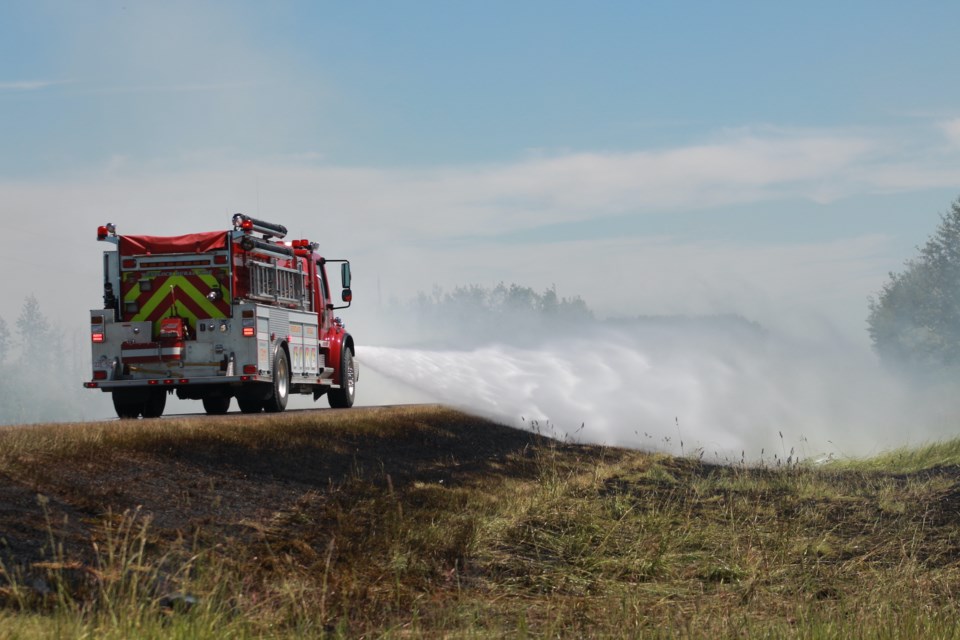LAC LA BICHE – Lac La Biche County is among six Alberta fire departments that will be receiving funding for the creation of a Wildland Urban Interface (WUI) team to better assist with fighting wildfires.
On May 23, the Government of Alberta announced the funding through the Wildland Urban Interface program. The program is a partnership between the provincial government and local authority fire services, which includes funding from Natural Resources Canada.
According to information from the provincial government, each new WUI team will receive $1.09 million over a two-to-three-year period to pay for personnel costs, administrative support, equipment, maintenance, as well as covering travel costs to help develop and expand the program’s training and operational capacity.
Wildland Urban Interface teams are comprised of firefighters who have specialized training and equipment required to respond to wildfires that enter communities, or where developed areas meet wildland areas.
John Mondal, who represents Ward 7 of Lac La Biche County, and is also a captain with Lac La Biche County Fire Rescue Service, said having a Wildland Urban Interface Team in the municipality is an exciting and reassuring development for both the Lac La Biche region and neighbouring communities.
“This investment . . . shows a strong commitment to wildfire resilience, giving the community better tools, training, and personnel to handle wildfires before they escalate,” he said. “This is a big win for wildfire preparedness in the region.”
Currently, there are two WUI teams in Alberta - one based out of Clearwater County and the other in the Town of High Level.
In addition to Lac La Biche County, the Town of Hinton, Town of Slave Lake, Kee Tas Kee Now Tribal Council, the Kananaskis Improvement District, and the Town of Strathmore will also have WUI teams.
Having a local WUI team will benefit the Lac La Biche region and neighbouring municipalities by providing faster initial attack response, mutual aid support, as well as prevention and mitigation, said Mondal.
This team will have the ability to respond quickly to wildfires before they grow out of control, therefore protecting homes, farms, and critical infrastructure, he added.
Since Lac La Biche County already assists neighbouring municipalities during wildfires through mutual aid agreements, this WUI team strengthens that capacity, which Mondal said means better coordinated responses.
John Kokotilo, the regional fire chief for Lac La Biche County, said the initiative allows for more timely, professional wildfire response throughout the province, especially in the northeastern region.
“To date, since our 2025 inception into this program, we have provided mutual aid response for Frog Lake First Nations as well as for the Boyle wildfire,” Kokotilo explained.
He explained that Lac La Biche County applied for the original provincial WUI team in 2018. There were two teams chosen, High Level and Clearwater, while Lac La Biche County came in as a close third in the process.
Although the municipality was not successful in its bid to secure a provincial Wildland Urban Interface team seven years ago, fire services continued to be proactive and built its own WUI team consisting of 14 personnel and three Structure Protection Unit (SPU) trailers.
With this unit in place, Lac La Biche County Fire Services has been able to provide mutual aid response for those in need, with firefighters from the municipality assisting in Saskatchewan, Alberta, British Columbia and the Northwest Territories.
When asked how these WUI teams operate, Kokotilo explained the general request for mutual aid is a Type 2 trailer, which has the ability to protect up to 50 or more structures, a Type 6 engine, also referred to as a wildland pump truck, along with four staff, one WUI lead and three WUI team members.
“The strategic placement of these teams situated throughout the province allows for timely response with the appropriate equipment and professionally trained personnel to ‘get on’ a wildfire quickly,” he said.
Mike Ellis, Alberta’s minister of public safety and emergency services, said the provincial government continues to make investments to strengthen the way emergencies are handled.
“We are effectively quadrupling the number of Wildland Urban Interface teams in Alberta to ensure the safety of Albertans’ businesses, neighbourhoods and critical infrastructure during wildfires,” Ellis stated.
Todd Loewen, the minister of Parks for the Government of Alberta, also praised the expansion of WUI teams in the province.
“Firefighting teams like this can truly make the difference when it comes to protecting Alberta’s communities,” said Loewen.


